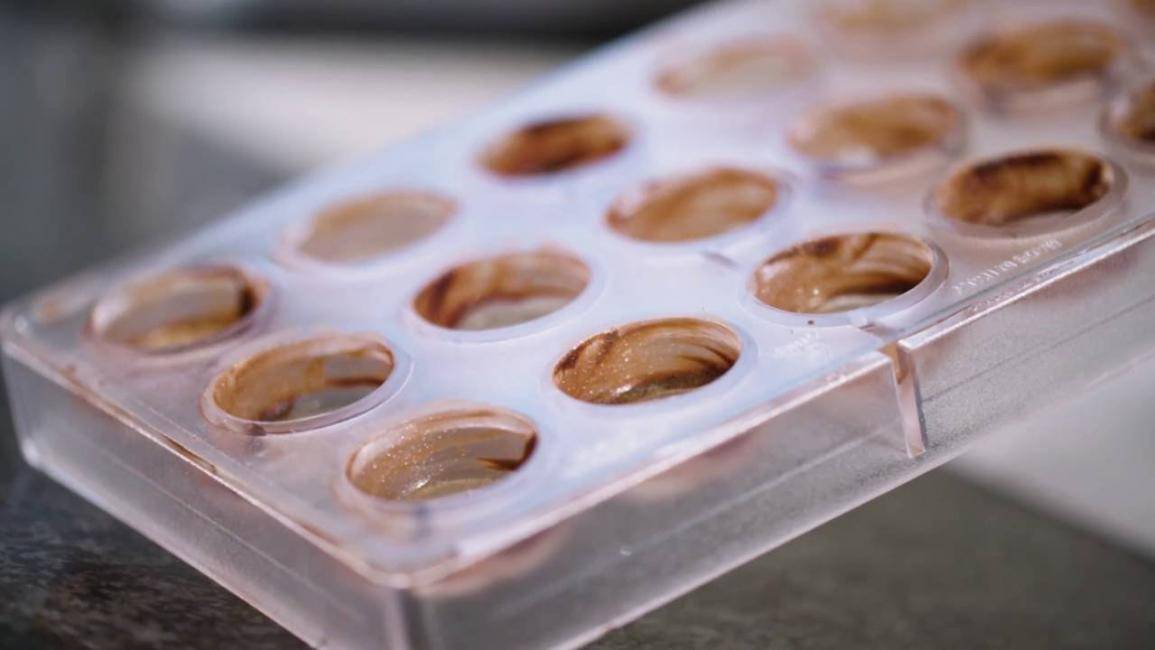Moulded chocolates - Getting creative
Moulded chocolates : Getting creative
If you’ve got the hang of the essentials, then why not try taking it up a notch? You’d be surprised how creative you can get with two types of chocolate and a bit of creative powder!
GOOD TO KNOW
What should you take to heart when making moulded chocolates?
Use polycarbonate moulds. These yield the best gloss and contract slower than chocolate, making unmoulding far easier.
Choose a fluid chocolate: a three-drop or four-drop fluidity is ideal.
Heat the moulds briefly before pouring in your chocolate. This way, you’ll avoid temperature shocks that could make your chocolate turn grey afterwards.
Make sure that your filling is smooth and fluid enough to pipe easily. Also check that it isn’t warmer than 28°C, otherwise the filling will make your chocolate shells melt.
Try to avoid making smudges on the rims of your chocolate moulds with the filling as they may cause leaks in your chocolate shells. Always fill each chocolate shell individually.
Never fill the chocolate shells to the brim. Leave a 1.5-mm opening from the top, otherwise it would be impossible to seal your chocolates properly.
Needed:
- Moulds for chocolates (pralines), preferably in polycarbonate
- Chocolate melter or tempering machine
- A chocolate scraper
- Creative powder
- Tempered chocolate
- A brush
- A latex glove
Step 1
Before filling your chocolate mould with tempered chocolate (see our tutorial about creating chocolates with a mould) dip your thumb into tempered dark, milk or white chocolate (make sure to wear a glove!) and smear it thinly into the mould cavities.
Step 2
Scrape off the excess chocolate from the top and sides of the mould.
Step 3
Brush a bit of creative powder into the mould cavities and remove the excess powder by tapping the mould against your worktop dressed with a piece of paper.
Step 4
Leave the chocolate to set at room temperature for a few moments and fill the mould with a previously unused type of tempered chocolate to create a beautiful colour contrast. Now make chocolate shells based on the techniques demonstrated in our other tutorials.
Tips:
When you try this finger-painting technique with white chocolate, you should let it harden well before pouring chocolate with a darker colour into the mould cavities. Most importantly, make sure to apply a thinner layer of milk or dark chocolate. If you add too thick a layer of chocolate on top, the heat will get trapped inside the mould for too long, which will cause the white chocolate to melt, rendering the effect less spectacular. Is the chocolate layer too thin and therefore making it too difficult to unmould the shell? Then you should let it harden until the chocolate feels dry to the touch and apply a second layer. For very large moulds you might even need a third chocolate layer.
You can also apply this technique on larger moulds and hollow figures, but instead of smearing the tempered chocolate in with your thumb, pour a small amount into the mould and spread it with a brush.


